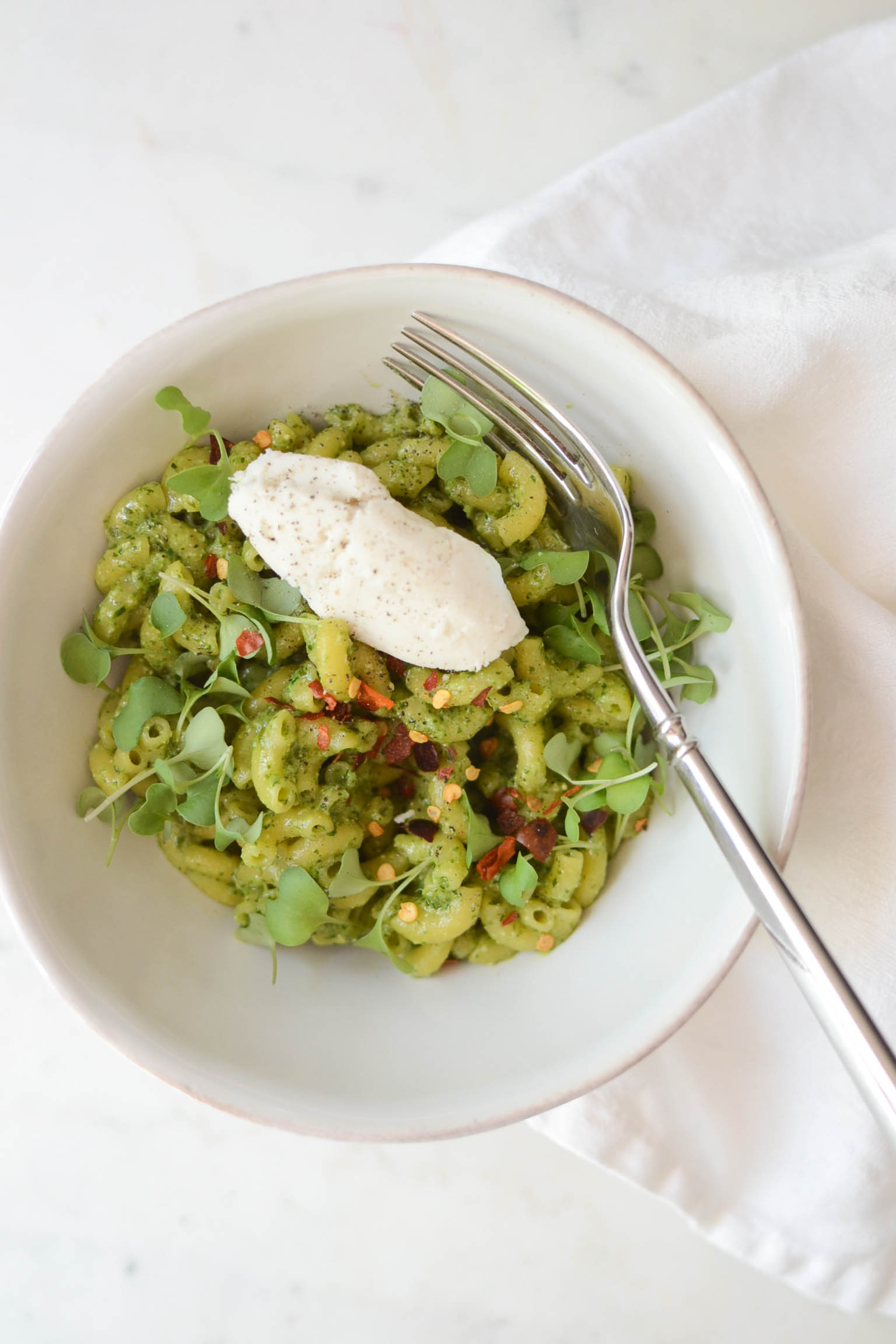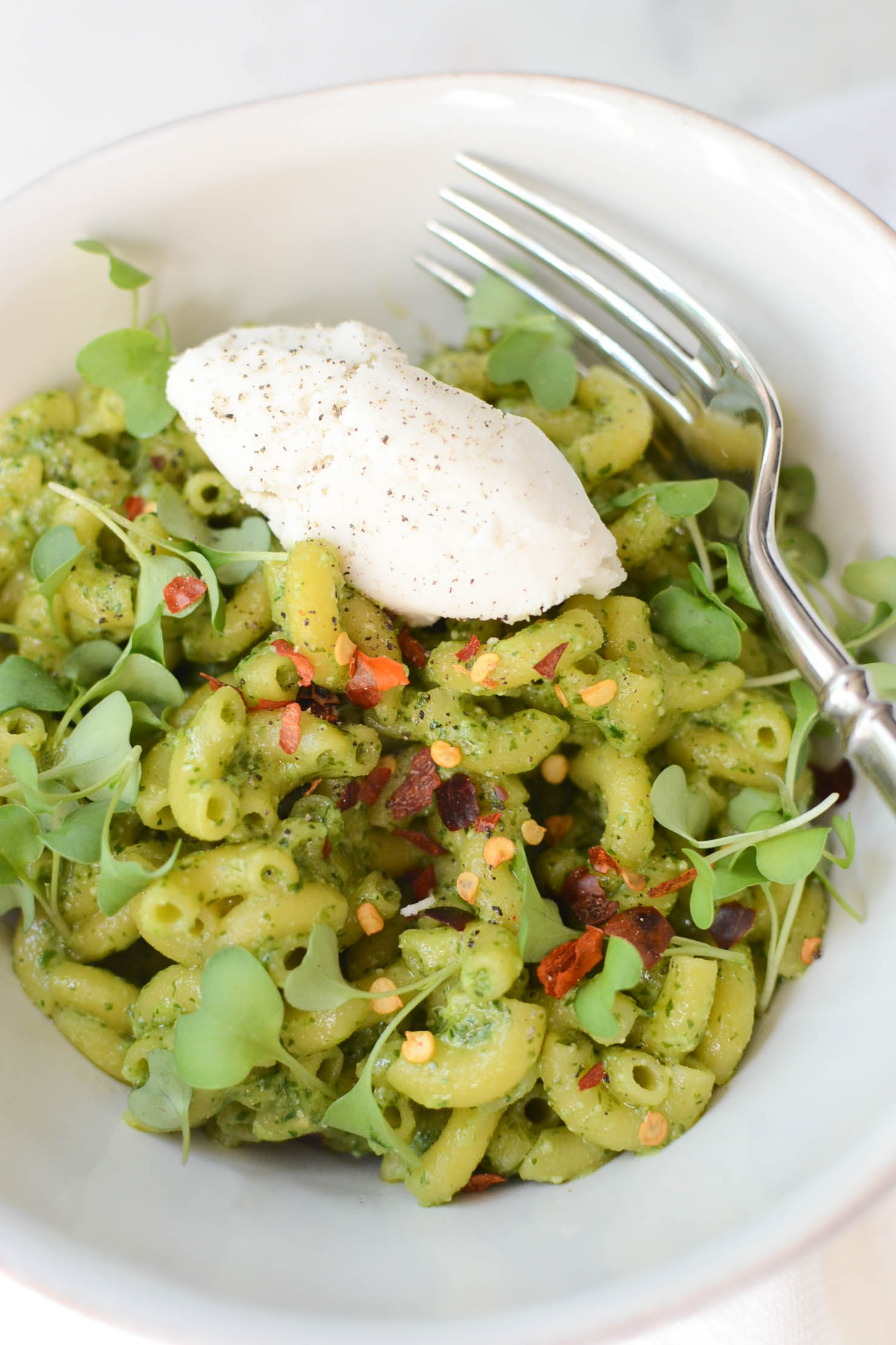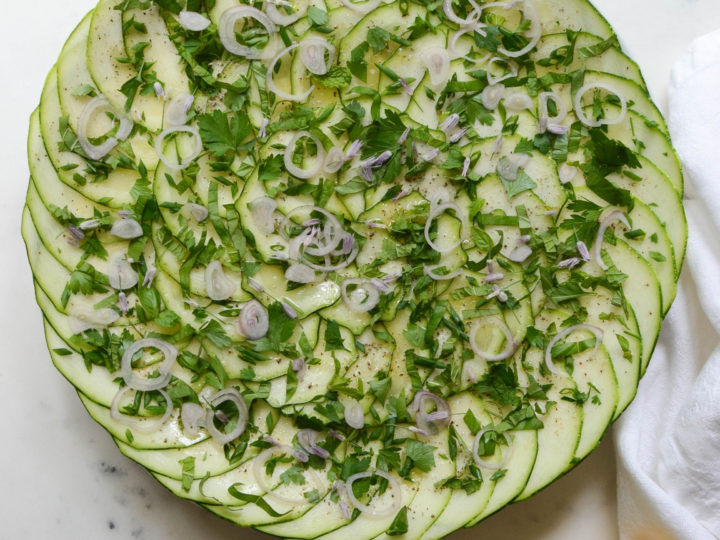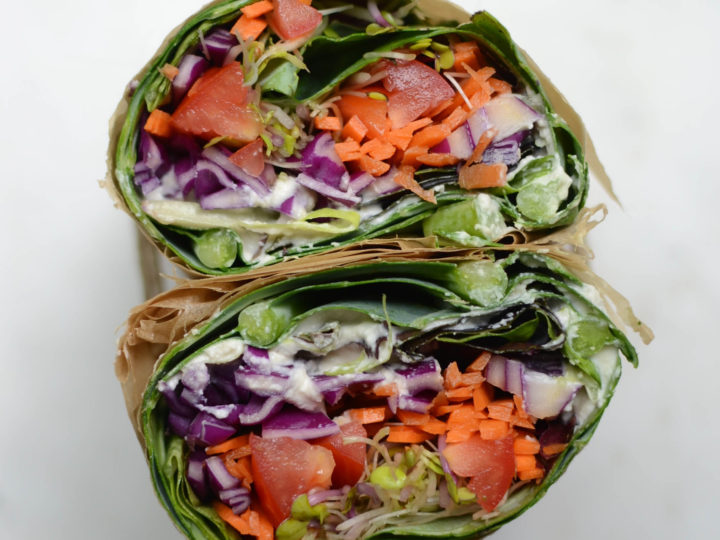
When I asked you all what you wanted to see here on “hello wholefoods” one of the answers I received was recipes for pregnant mommas! While all the recipes I post here are nourishing for pregnant women, I figured I’d highlight some specific foods and nutrients that are sometimes lacking in a typical diet. Another thing that I mention in my post “taking care of yourself in the 4th trimester” is that getting into the routine of eating easy, nourishing meals and snacks BEFORE you have the baby is so important because it is so much harder to take care of yourself after the baby arrives. Today I am sharing a 10 minute summer pasta dish with a nutrient dense pesto!
The most important food group that you can eat while you are pregnant is vegetables! They are loaded with vitamins, minerals, fiber, antioxidants, micronutrients and pack a ton of nutrients per calorie. The dark green ones, including herbs, are especially good for you! Dark leafy greens are a great source of vitamin K which is best known for its role in blood clotting, especially in infants. It is actually named after the German word for blood clotting (koagulation).
Dark leafy greens are also an excellent source of folate, as are lentils which are also included in this recipe. A folate deficiency can have devastating effects, ranging from birth defects to blood diseases and possibly even cancers. The word folate comes from the Latin word “folium” which means “leaf” reminding us how important it is to eat our greens! While this is probably contrary to everything you’ve heard about folate, supplemental folic acid and folate are actually linked to increased risk of cancer. Under the recommendation of Dr. Fuhrman, (who I worked for during my first pregnancy) I did not take supplemental folate during either of my pregnancies, but instead, made sure I was eating lots of folate rich foods! (lentils, beans, asparagus, strawberries, dark greens, cauliflower, fennel, just to name a few!) As I talk about in my post “preparing your body for pregnancy”, some of the most important development of a baby happens before a woman even knows she is pregnant, before she’s even missed a period! This is why it is imperative to have good nutrient stores and eating habits in place before conception if possible! Folate is not only important during the first month of pregnancy, make sure you are eating lots of folate in plant form throughout your whole pregnancy!
One more nutrient that women need more of during childbearing years and during pregnancy is iron. You may know that iron plays a huge roll in transporting oxygen to tissues all over our body through an iron-containing protein called hemoglobin. Iron is also necessary to support proper metabolism for muscles and other active organs. A woman’s blood volume increases by almost 50% during pregnancy so there is a much greater demand for iron! Guess what, legumes and leafy greens are excellent sources of iron! If you want to know why I do not recommend animal sources of iron you can find that in my post “my beef with Paleo”.

pasta with watercress pesto
serves 2
ingredients
box of your favorite pasta (I used Tolerant green lentil)
1 clove garlic (omit if garlic bothers you)
4 tbs *Mediterranean pine nuts
2 cups watercress (or another green)
1/2 cup sorrel (or another green)
1/2 tsp salt
2/3 cup first cold pressed extra virgin olive oil
* Look specifically for Mediterranean pine nuts which take longer to mature than other varieties and are more nutritionally dense
directions
cook your pasta according to the directions on the box
while pasta is cooking (or ahead of time) place all pesto ingredients in the blender and blend until smooth. this literally takes about 5 minutes. serve pesto over pasta and top with your favorite vegan cheese (I used Miyoko’s cashew mozzarella) and pepper flakes if desired. bulk up the meal by mixing in some roasted veggies like zucchini.
pre-made or leftover pesto will stay fresh for about a week in an airtight container in the refrigerator. this pesto is also amazing on sockeye salmon and sandwiches!
once in awhile, the pesto will be distastefully bitter (usually from sprouted garlic), and we’ve been able to save it by adding just the tiniest pinch of coconut sugar. I certainly don’t like to add sugar to my everyday food, but this is a little trick that can save a whole batch of pesto!






